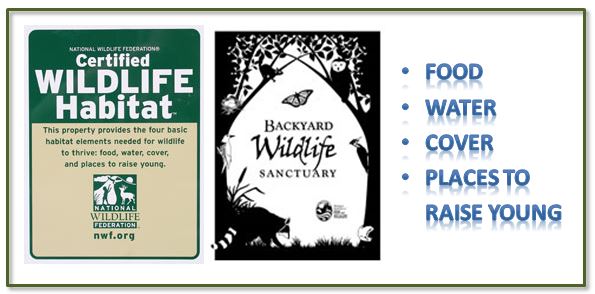
Several months ago, I wrote a column about discouraging pests, such as deer, moles and rodents, in your garden. I had a reader take issue with my suggestions, such as blocking access to shelter in buildings; removing birdfeeders (temporarily, at least); and managing your trash properly to discourage unwanted diners. I intended to give people greener options for dealing with garden household pests, not to discourage all wildlife.
Habitat loss is the biggest cause of species extinction on our planet. The best way to combat that trend is to protect existing wild ecosystems, to restore disturbed habitats, to limit human population growth and speculative new construction to areas already impacted by development, and to plan landscapes to encourage appropriate native wildlife.
When you plan landscapes, it’s important to not merely focus on aesthetics but to balance the needs of wildlife with the needs of people. We cannot, however, allow wildlife to decimate our crops or livestock, or spread disease; and although I would be thrilled to see a bear, cougar or pack of wolves at a safe distance, I shudder to think of dangerous close encounters.
The best way to encourage wildlife is to re-create habitat. Our national parks and wildlife refuges have rules against feeding wildlife for several reasons, mostly to protect the health and safety of people and wildlife.
Feeding wildlife disrupts predator/prey relationships. Studies have shown, for example, that feeding corvids (jays, crows, etc.) can increase the populations of those birds, and they in turn eat the eggs and young of other birds.
People or pet food is often not good nutritionally for wild animals and can spoil more readily than food they normally wood cache. Wild food they forage for themselves is best.
The National Wildlife Federation’s “Certified Wildlife Habitat” and the Washington Department of Fish and Wildlife’s “Backyard Wildlife Sanctuary” are programs that will officially recognize your efforts to foster wildlife in your backyard. They are great educational programs for children.
In order to qualify, you need to do the following:
- Provide food for wildlife. Plant native trees and shrubs that produce berries, seeds or nuts, foliage and flowers. Birdfeeders bring birds up close and are a great way to learn about songbirds. There is less of a danger for creating a dependency with songbirds, because they can easily fly to other locations to search for food, except when they are nesting. When you feed the birds, it’s for your entertainment and education, not for them. Burrowing animals and some insects such as butterflies need a wildflower meadow; these smaller animals and insects are prey species for larger predators.
- Supply water for wildlife. If you have no natural water feature, you can start by installing a bird bath or fountain. A pond with plenty of algae and other microorganisms is a necessity for amphibians.
- Create cover for wildlife. Wildlife needs places to hide to feel safe from predators and inclement weather. Evergreen trees, bushy or thorny shrubs, brush piles, cavities in old trees or stumps, niches in rockery, or man-made shelters such as bat boxes all make good hiding or nesting places.
- Give wildlife a place to raise their young. Wildlife needs safe places to incubate eggs and raise their young. Many birdhouse designs are available to buy or build. The folks at Wild Birds Unlimited in Gig Harbor can help you choose different types of feeders, shelters or houses.
- Finally, let your garden go green. Practice soil and water conservation, control exotic species, and garden organically. Then you can certify your garden as a “Backyard Wildlife Habitat.”
(This article was first published in the Peninsula Gateway on July 20, 2011 as Garden for People and Wildlife.)

